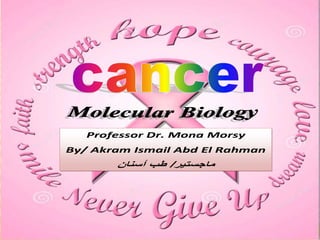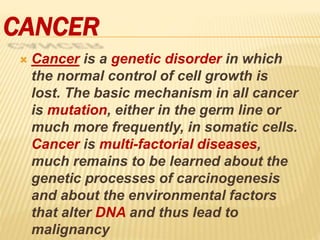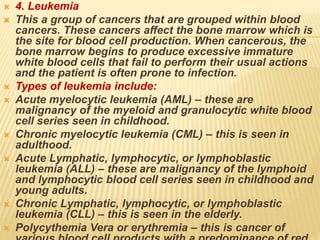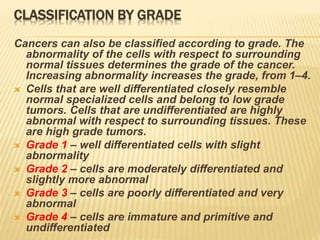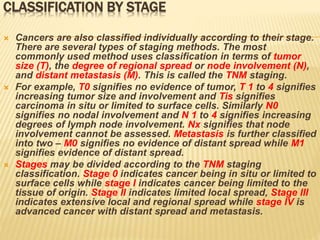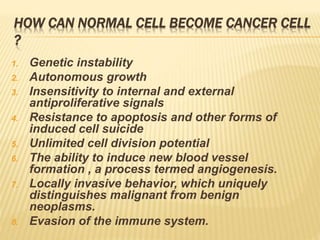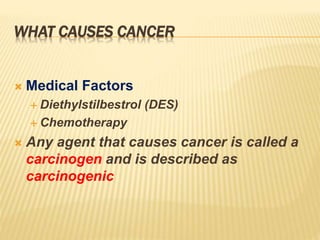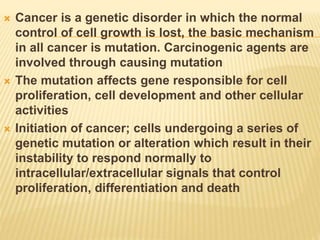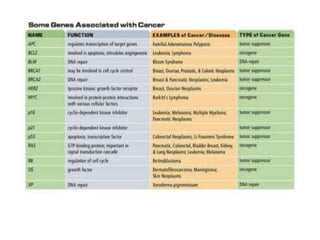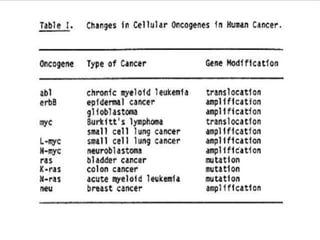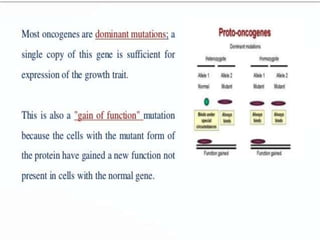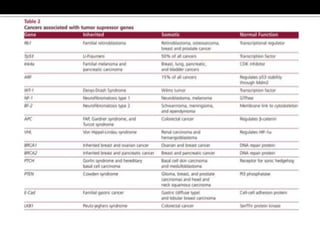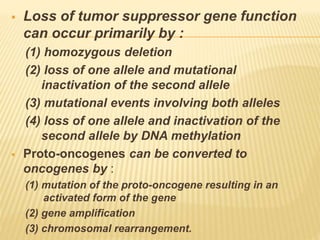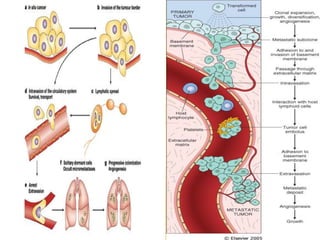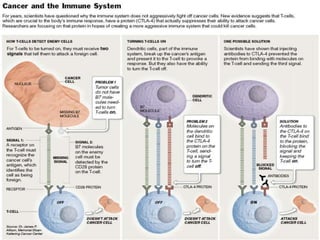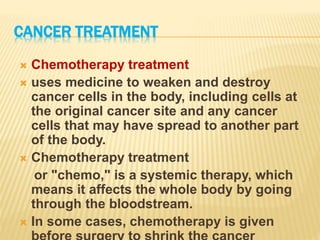This document provides an overview of cancer and its genetic basis. It defines cancer as a genetic disorder where normal cell growth control is lost. Cancer arises due to mutations in genes regulating cell proliferation, development, and other functions. These mutated genes, called oncogenes, promote uncontrolled cell growth. The document discusses various cancer risk factors and causes, including genetic predisposition, carcinogens, viruses, and lifestyle factors. It also describes the roles of oncogenes and tumor suppressor genes in cancer development.
